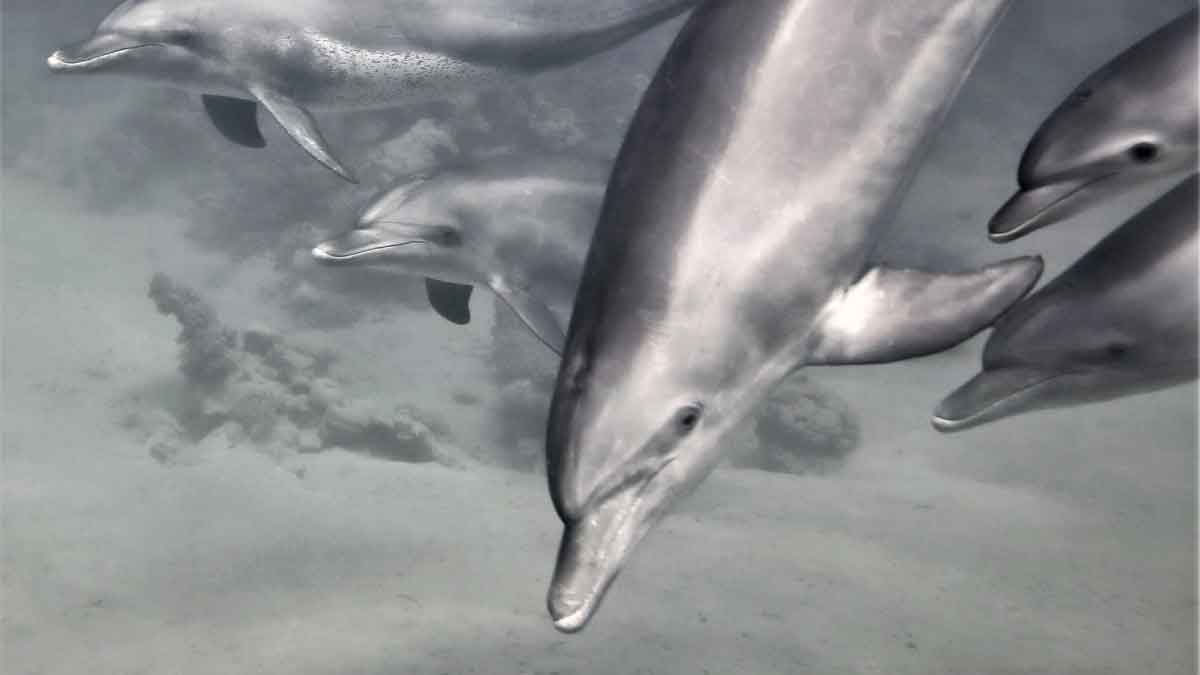Impression of dolphins

All over the world, detecting dangerous underwater targets can be a minefield – quite literally. If potentially explosive objects are not correctly recognised, organising their safe disposal and navigating areas around them becomes an almost impossible task. The quest for a solution has thus required a unique, ambitious and biologically-inspired approach.
Locating unexploded ordnance and mines is a hazardous business, and appropriately identifying them underwater is one of the most challenging global missions of our times. Heriot-Watt University’s research project has focused on solving the problem by closely observing the sonar of bottle-nosed dolphins, with a view to drawing inspiration for a new hardware-based sonar system. One of the most intelligent mammals on the planet, this particular species of dolphin possesses an incredibly sophisticated sonar, allowing it to undertake tasks that have been beyond the capabilities of manmade acoustics.
Tide of change
Initial work from researchers analysed the signals that dolphins use and narrowed down the most successful elements. This led to a series of dolphin-inspired signals being produced that could be incorporated into a manmade Autonomous Underwater Vehicle (AUV). The next stage involved the team carrying out some of the activities typically performed by dolphins, using entirely manmade wideband acoustic sonars. During the development there was also a welter of other tasks to consider, such as route surveying, wall thickness, flood detection, wax build-up and, pivotally, the hydrography, including impacts on local mineralogy and fisheries.
The project incorporated the techniques throughout the manufacturing of a novel device that could be used in the real world. The newly-created BioSonar uses the signals for underwater scene analysis, allowing objects to be correctly identified, the condition of subsea assets to be accurately determined and seafloor sediments to be analysed. As well as detecting the objects, the AUV can also hear what is going on inside them.
The system will be widely employed, not only to identify mines, but also look at condition monitoring of offshore wind and oil installations. BioSonar offers a remotely operated system, making the tasks both safer and lower in cost. Furthermore, by using AUVs to carry the sonar, humans are kept well away from the hazardous environment, thereby greatly reducing the direct risks involved.
Deep dive
The project has led to a spinout company – Hydrason Solutions – which takes responsibility for commercialising the sonar and generally exploiting the research. Hydrason is now able to deliver the technology to a vast array of companies, and the Ministry of Defence, providing them with the capability to identify underwater objects, assess the integrity of underwater assets, find blockages in underwater pipelines and monitor the makeup of the seafloor.
In addition, the sonar is being applied to pipeline integrity assessments, which is vital to the offshore oil and gas industries. It is also being used for cable monitoring and prognostics – areas of increasing importance in the move towards greater offshore electricity generation.
Meanwhile, the research project is allowing costs to be reduced for the monitoring of subsea assets, reducing the number of failures and, ultimately, allowing more surveillance to be undertaken.